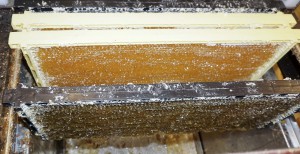I have a honey loosener I havn’t used for year. Heather honey rarely yields where I live. But this year was exceptional. And heather honey is said to be as good for the health as manuka honey…
And I happened to have an apiary with insulated boxes and plastic frames where it yielded the most. Plastic frames are a blessing in such a situation, if you want to extract it well. Many times you get high water content in heather honey, but not this year. Still it came out of the combs well, with
- Plastic frames
- A honey loosener http://www.swienty.com/shop/vare.asp?side=0&vareid=107331
- A honey separator for straining, making the tixotropic honey fluid enough to go through the fine mesh strainer. http://www.swienty.com/shop/vare.asp?side=0&vareid=107802
An alternative is to bottle the honey directly from the extractor and sell it as raw honey. Or press it, if you have a strong enough press, like the one Brother Adam had at Buckfast Abbey.
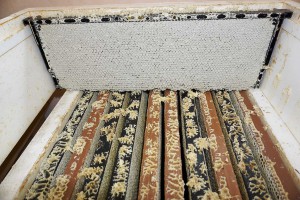 Nice filled plastic frames with heather honey. Normally I use single walled wooden boxes, wooden frames and wax foundation. But in a project apiary I use well insulating plastic boxes. And this apiary happened to be in the middle of an area with heavy yielding heather.
Nice filled plastic frames with heather honey. Normally I use single walled wooden boxes, wooden frames and wax foundation. But in a project apiary I use well insulating plastic boxes. And this apiary happened to be in the middle of an area with heavy yielding heather.
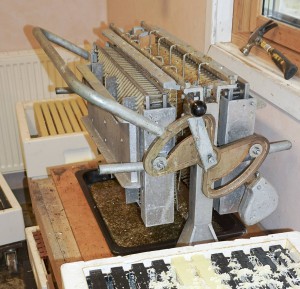 This is a Norwegian honey loosener I use. I’m not sure you can buy it anymore. But there is German, expensive enough…
This is a Norwegian honey loosener I use. I’m not sure you can buy it anymore. But there is German, expensive enough…
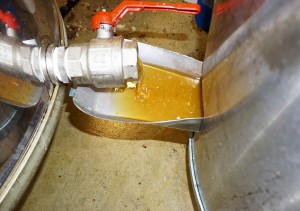 Honey flowing directly into this separator, a Swedish invention that is made in Germany. No pumps, no tubes are needed.
Honey flowing directly into this separator, a Swedish invention that is made in Germany. No pumps, no tubes are needed.
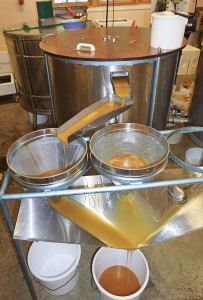 The honey is lifted to the top in the separator from where it flows into fine mesh strainers. This separator I bought from the Swedish inventor many years ago.
The honey is lifted to the top in the separator from where it flows into fine mesh strainers. This separator I bought from the Swedish inventor many years ago.
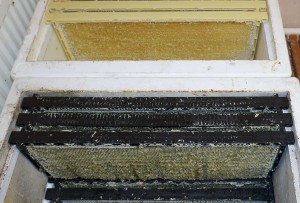 Almost as well extracted combs as with non tixotropic honey.
Almost as well extracted combs as with non tixotropic honey.
